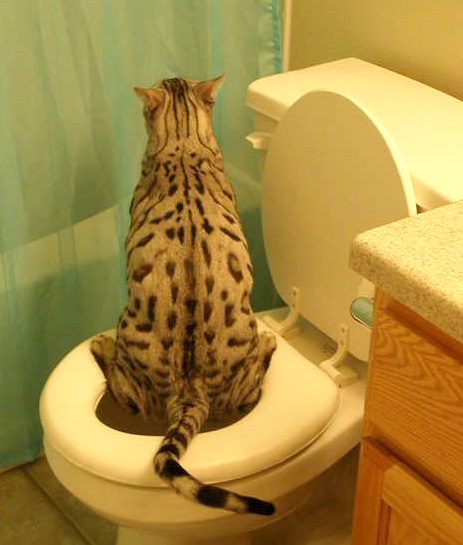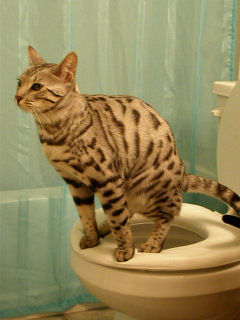Important Aspects Regarding Flushing Animal Waste Down the Toilet
Important Aspects Regarding Flushing Animal Waste Down the Toilet
Blog Article
We have stumbled on the article on Should you flush animal waste down the toilet below on the web and think it made sense to write about it with you here.

When it pertains to taking care of waste, especially animal waste, lots of people often turn to the hassle-free alternative of flushing it down the bathroom. Nonetheless, this relatively simple solution can have severe effects for the environment and public health. In this short article, we'll check out why flushing animal waste down the commode is a bad idea and give alternative approaches for correct disposal.
Introduction
Correct waste disposal is vital for preserving environmental sustainability and public health. While it might seem safe to flush animal waste down the toilet, it can lead to numerous concerns, both for the environment and human wellness.
Risks of flushing animal waste
Environmental impact
Flushing animal waste introduces unsafe bacteria and pathogens right into rivers, which can adversely affect marine ecosystems. These microorganisms can infect water sources and damage aquatic life, disrupting fragile ecosystems.
Public health worries
Animal waste contains damaging germs such as E. coli and Salmonella, which can position severe wellness dangers to people. Flushing animal waste down the toilet can contaminate water materials, leading to the spread of diseases and infections.
Alternatives to flushing
Rather than flushing pet waste down the bathroom, there are a number of different disposal methods that are extra eco-friendly and sanitary.
Composting
Composting animal waste is an eco-friendly means to take care of it. By composting, organic matter is broken down right into nutrient-rich dirt, which can be utilized to fertilize gardens and plants.
Land fill disposal
Dealing with animal waste in a land fill is one more option. While not as eco-friendly as composting, it is a much safer alternative to flushing, as it stops the contamination of water sources.
Pet dog waste disposal systems
There are specialized pet dog waste disposal systems readily available that safely and hygienically throw away animal waste. These systems commonly use enzymes to break down waste and get rid of smells.
Steps to correct pet waste disposal
To guarantee correct disposal of pet waste, adhere to these steps:
Scooping and nabbing waste
Consistently scoop and bag pet waste using biodegradable bags. This avoids waste from polluting the atmosphere.
Utilizing assigned waste bins
Dispose of bagged animal waste in designated waste containers, such as garden compost containers or garbage dump containers. Prevent flushing it down the bathroom in any way expenses.
Cleansing litter boxes and pet locations frequently
On a regular basis clean litter boxes and family pet areas to stop the build-up of waste and bacteria. Usage pet-safe cleaning items to preserve hygiene.
Advantages of proper disposal techniques
Embracing correct disposal approaches for animal waste uses numerous advantages:
Reduced environmental pollution
Proper disposal techniques minimize the risk of environmental pollution, safeguarding rivers and environments from contamination
Reduced danger of water contamination.
By avoiding flushing pet waste down the bathroom, the danger of water contamination is significantly decreased, securing public health.
Boosted cleanliness and health
Correct disposal approaches advertise much better cleanliness and hygiene, producing a safer atmosphere for both people and animals.
Conclusion
In conclusion, purging animal waste down the toilet is harmful to the setting and public health. By embracing alternate disposal methods and adhering to appropriate waste administration practices, we can lessen the unfavorable impact of animal waste and add to a cleaner, much healthier world.
Why You Should here Never Flush Cat Poop Down the Toilet
A rose by any other name might smell as sweet, but not all poop is created equal. Toilets, and our sewage systems, are designed for human excrement, not animal waste. It might seem like it couldn’t hurt to toss cat feces into the loo, but it’s not a good idea to flush cat poop in the toilet.
First and foremost, assuming your cat uses a litter box, any waste is going to have litter on it. And even the smallest amount of litter can wreak havoc on plumbing.
Over time, small amounts build up, filling up your septic system. Most litter sold today is clumping; it is made from a type of clay that hardens when it gets wet. Ever tried to scrape old clumps from the bottom of a litter box? You know just how cement-hard it can get!
Now imagine just a small clump of that stuck in your pipes. A simple de-clogger like Drano isn’t going to cut it. And that means it’s going to cost you big time to fix it.
For an amusing, graphic tale of what happens when you flush too much litter down the toilet all at once, take a few minutes to read Gene Weingarten’s 2017 Washington Post column “So that’s what happens when you flush cat litter down the toilet.”
Parasitic Contamination
Believe it or not, your healthy kitty may be harboring a nasty parasite. Only cats excrete Toxoplasma in their feces. Yet it rarely causes serious health issues in the cats that are infected. Most people will be fine too if infected. Only pregnant women and people with compromised immune systems are at risk. (If you’ve ever heard how women who are expecting are excused from litter cleaning duty, Toxoplasma is why.)
But other animals may have a problem if infected with the parasite. And human water treatment systems aren’t designed to handle it. As a result, the systems don’t remove the parasite before discharging wastewater into local waterways. Fish, shellfish, and other marine life — otters in particular — are susceptible to toxoplasma. If exposed, most will end up with brain damage and many will die.
Depending on the species of fish, they may end up on someone’s fish hook and, ultimately on someone’s dinner plate. If that someone has a chronic illness, they’re at risk.
Skip the Toilet Training
We know there are folks out there who like to toilet train their cats. And we give them props, it takes a lot of work. But thanks to the toxoplasma, it’s not a good idea.
Leave the toilet to the humans, and accept your future litter cleaning duty.

On a regular basis clean litter boxes and family pet areas to stop the build-up of waste and bacteria. Usage pet-safe cleaning items to preserve hygiene.
Advantages of proper disposal techniques
Embracing correct disposal approaches for animal waste uses numerous advantages:
Reduced environmental pollution
Proper disposal techniques minimize the risk of environmental pollution, safeguarding rivers and environments from contamination
Reduced danger of water contamination.
By avoiding flushing pet waste down the bathroom, the danger of water contamination is significantly decreased, securing public health.
Boosted cleanliness and health
Correct disposal approaches advertise much better cleanliness and hygiene, producing a safer atmosphere for both people and animals.
Conclusion
In conclusion, purging animal waste down the toilet is harmful to the setting and public health. By embracing alternate disposal methods and adhering to appropriate waste administration practices, we can lessen the unfavorable impact of animal waste and add to a cleaner, much healthier world.
Why You Should here Never Flush Cat Poop Down the Toilet
A rose by any other name might smell as sweet, but not all poop is created equal. Toilets, and our sewage systems, are designed for human excrement, not animal waste. It might seem like it couldn’t hurt to toss cat feces into the loo, but it’s not a good idea to flush cat poop in the toilet.
First and foremost, assuming your cat uses a litter box, any waste is going to have litter on it. And even the smallest amount of litter can wreak havoc on plumbing.
Over time, small amounts build up, filling up your septic system. Most litter sold today is clumping; it is made from a type of clay that hardens when it gets wet. Ever tried to scrape old clumps from the bottom of a litter box? You know just how cement-hard it can get!
Now imagine just a small clump of that stuck in your pipes. A simple de-clogger like Drano isn’t going to cut it. And that means it’s going to cost you big time to fix it.
For an amusing, graphic tale of what happens when you flush too much litter down the toilet all at once, take a few minutes to read Gene Weingarten’s 2017 Washington Post column “So that’s what happens when you flush cat litter down the toilet.”
Parasitic Contamination
Believe it or not, your healthy kitty may be harboring a nasty parasite. Only cats excrete Toxoplasma in their feces. Yet it rarely causes serious health issues in the cats that are infected. Most people will be fine too if infected. Only pregnant women and people with compromised immune systems are at risk. (If you’ve ever heard how women who are expecting are excused from litter cleaning duty, Toxoplasma is why.)
But other animals may have a problem if infected with the parasite. And human water treatment systems aren’t designed to handle it. As a result, the systems don’t remove the parasite before discharging wastewater into local waterways. Fish, shellfish, and other marine life — otters in particular — are susceptible to toxoplasma. If exposed, most will end up with brain damage and many will die.
Depending on the species of fish, they may end up on someone’s fish hook and, ultimately on someone’s dinner plate. If that someone has a chronic illness, they’re at risk.
Skip the Toilet Training
We know there are folks out there who like to toilet train their cats. And we give them props, it takes a lot of work. But thanks to the toxoplasma, it’s not a good idea.
Leave the toilet to the humans, and accept your future litter cleaning duty.

We had been made aware of that editorial about 10 Things You Should Never Flush Down The Toilet through an acquaintance on another web address. Make sure you take a moment to share this blog entry if you enjoyed reading it. Many thanks for taking the time to read it.
Call Today Report this page